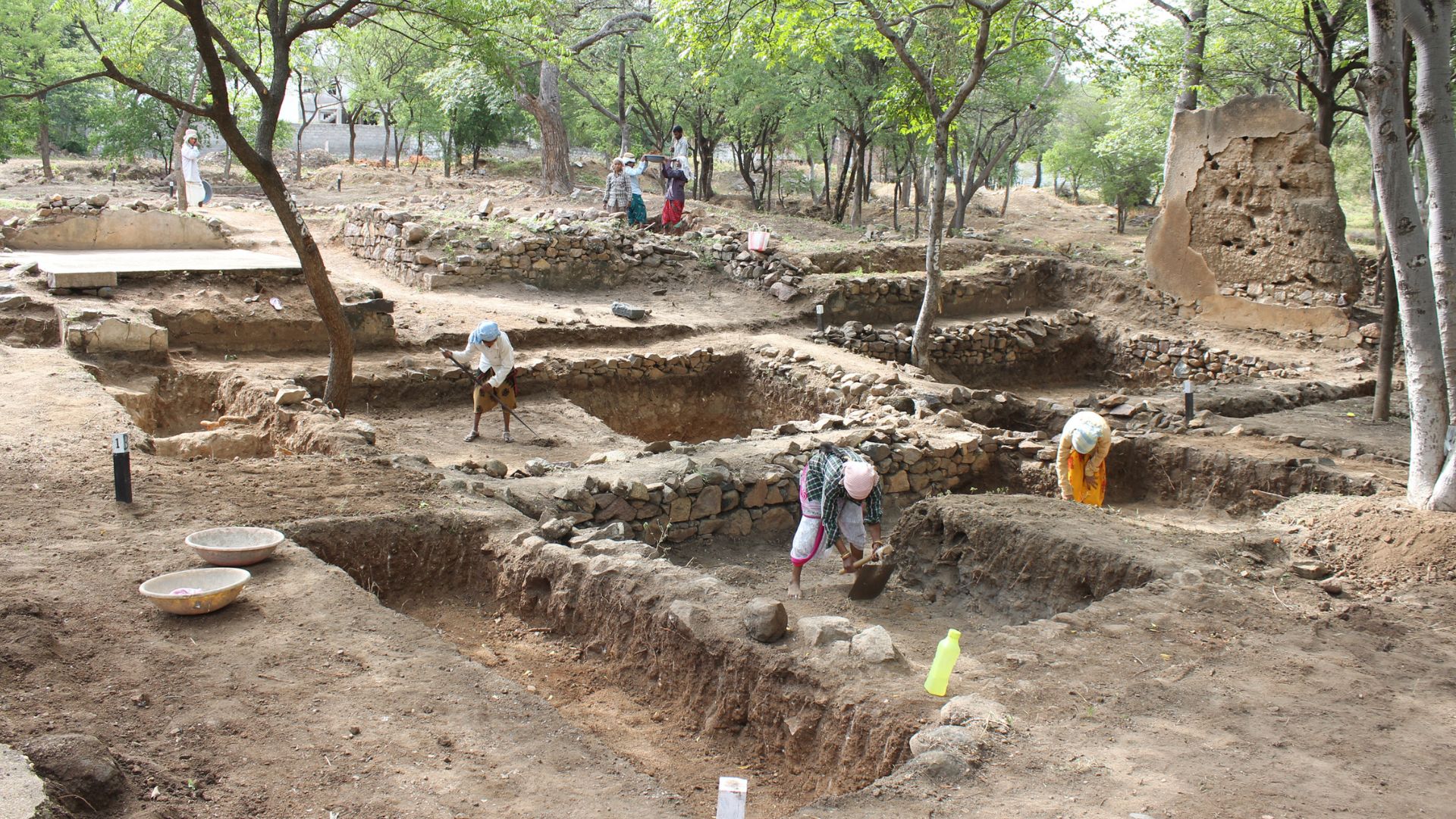Archaeological excavations funded by a grant from the U.S. Ambassadors Fund for Cultural Preservation provides new understanding of the Qutb Shahi Heritage Park in Hyderabad.
May 2017

Although the Qutb Shahi Heritage Park is spread across 43 hectares, excavations under the AFCP project were limited to the central zone of approximately 16 hectares, which was considered the most significant. (Courtesy Aga Khan Trust for Culture)
Located just below Hyderabad’s famous Golconda Fort is Qutb Shahi Heritage Park, one of the world’s most significant medieval necropolises. The 43-hectare site hosts more than 70 mausoleums, mosques, wells, a mortuary bath, pavilions, garden buildings and other structures. The tomb complex, built during the approximately 170-year reign of the Qutb Shahi dynasty in the Hyderabad region during the 16th and 17th centuries, is the beneficiary of a major conservation and landscape restoration project. The project aims to ensure the long-term preservation and accessibility of the site, which has earned tentative listing in the World Heritage List.
The restoration project, expected to be completed in 2023, is being implemented by a private philanthropic foundation, the Aga Khan Trust for Culture (AKTC), in partnership with the Department of Archaeology and Museums of the Government of Telangana. AKTC is an agency of the Aga Khan Development Network, which is active in 30 countries, especially in Asia and Africa.
A key piece of the project was made possible by a $101,000 (Rs. 67 lakhs approximately) grant from the U.S. Ambassadors Fund for Cultural Preservation (AFCP) of the U.S. State Department. AFCP supports the preservation of cultural sites, cultural objects and forms of traditional cultural expression in more than 100 countries around the world.
AKTC received the AFCP grant and began executing the project in September 2014. This project officially ended in December 2015 and an exhibition of the archaeological finds at the complex was organized in July 2016.
Although the Qutb Shahi Heritage Park is spread across 43 hectares, excavations under this project were limited to the central zone of approximately 16 hectares, which was considered the most significant. Through advanced scientific investigations, archaeological excavations and appropriate conservation work, the AFCP grant helped map and document the diversity of the structures found at the Qutb Shahi tomb complex, like the remnants of a 16th-century residential complex and tomb-garden enclosure walls. During these excavations, extensive water features like aqueducts and baths fed with terracotta pipes were also discovered.
“The archaeological excavations funded by the AFCP grant have helped us understand the complex started as a residential settlement and seems to have been later turned into a necropolis,” notes architect and conservationist Ratish Nanda, who is the chief executive at AKTC, India. “Also, the excavations have revealed remnants of garden enclosure walls and, in turn, led to the understanding that, as with the Mughals, the Qutb Shahi built enclosed garden tombs.
“Remnants of enclosure walls have now established that both the tomb of the first king, Sultan Quli Qutb Shah, as well as the tomb of Ibrahim Quli Qutb Shah stood within enclosed gardens, thus negating the commonly held belief that unlike the Mughals in the north, the Qutb Shahis did not build enclosed gardens to site the tombs. These discoveries are informing the landscape restoration.”
The AFCP grant has also allowed the conservation of the excavated remains, which will ensure these significant new findings will not be covered over, as is the usual practice, and will continue to be visible to visitors to the site, notes Nanda.
In addition, the excavation program funded by AFCP has helped students of archaeology to gain significant field experience under the guidance of K.K. Muhammed, current project archaeological director at AKTC and former regional director (North) of the Archaeological Survey of India, which is part of the Government of India’s Ministry of Culture.
“Here, layers and layers of history have been buried. And it was here many of the battles and wars were fought, and history was made and unmade,” says Muhammed. “So, what we have been looking for is, what is that kind of history which was buried earlier, how to expose it and how to present it to the world.”
Steve Fox is a freelance writer, former newspaper publisher and reporter based in Ventura, California.
COMMENTS